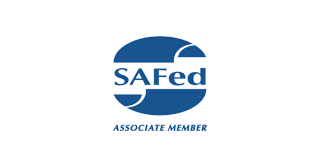The Control of Substances Hazardous to Health (COSHH) Regulations are designed to protect workers from the risks posed by hazardous substances in the workplace. Identifying these substances is the first step toward compliance and ensuring a safe working environment. But with the wide variety of chemicals, dust, and biological agents found in workplaces, how do you determine which ones fall under COSHH?
In this blog, we’ll guide you through the process of identifying hazardous substances, helping you create a safer, more compliant workplace.
What Are Hazardous Substances?
Under COSHH, hazardous substances are those that can harm workers’ health when inhaled, ingested, or come into contact with the skin. These can include:
- Chemicals (cleaning agents, solvents, paints).
- Dusts (wood, silica, flour).
- Fumes (welding, exhaust).
- Biological agents (bacteria, viruses).
- Gases and vapours (chlorine, ammonia).
Step-by-Step Guide to Identifying Hazardous Substances
1. Check Product Labels and Safety Data Sheets (SDS)
Every hazardous substance must have a label and an accompanying Safety Data Sheet. These resources are invaluable for identification. Look for:
- Hazard Symbols: Such as toxic, flammable, or irritant.
- Signal Words: “Danger” or “Warning.”
- Hazard Statements: Descriptions like “causes skin irritation” or “may cause respiratory problems.”
The SDS will also provide detailed information on handling, storage, and emergency measures.
2. Review Workplace Processes
Hazardous substances aren’t limited to packaged chemicals. Review workplace processes to identify substances that might be generated during operations, such as:
- Dust from cutting, sanding, or grinding materials.
- Fumes from welding or heating metals.
- Vapours from solvents or adhesives.
These by-products are often overlooked but can pose significant risks.
3. Evaluate Raw Materials and Ingredients
In industries like food production, cosmetics, or pharmaceuticals, ingredients themselves might be hazardous. For example:
- Flour dust in bakeries can cause asthma.
- Essential oils may irritate skin or eyes.
- Preservatives and additives might have harmful effects if mishandled.
4. Consult COSHH Essentials
The HSE COSHH Essentials tool provides guidance on identifying hazardous substances and implementing controls. By entering details about your workplace and processes, this tool can help you pinpoint substances that require attention.
5. Consider Exposure Routes
Substances may be hazardous depending on how workers are exposed. Key routes include:
- Inhalation: Breathing in dust, fumes, or vapours.
- Skin Contact: Handling chemicals or contaminated surfaces.
- Ingestion: Consuming contaminated food or accidentally ingesting substances.
- Injection: Accidental punctures from needles or sharp objects.
Evaluate each substance based on its potential exposure route.
6. Look for Long-Term Health Risks
Some hazardous substances don’t cause immediate harm but lead to chronic conditions over time, such as:
- Asbestos exposure causing lung disease.
- Repeated exposure to solvents causing neurological issues.
- Long-term inhalation of silica dust leading to silicosis.
Identify substances with potential long-term effects and ensure appropriate measures are in place.
7. Don’t Overlook Biological Hazards
In settings like healthcare, agriculture, or waste management, biological agents can pose significant risks. Examples include:
- Bacteria and viruses in hospitals.
- Mold spores in damp environments.
- Animal waste or zoonotic diseases on farms.
Conduct risk assessments specific to these hazards.
What to Do Once You’ve Identified Hazardous Substances
1. Conduct a Risk Assessment
For each hazardous substance, assess:
- The level of exposure.
- The tasks or processes that create risks.
- The effectiveness of current control measures.
2. Implement Controls
Based on your risk assessment, introduce control measures such as:
- Substituting hazardous substances with safer alternatives.
- Using local exhaust ventilation (LEV) systems.
- Providing appropriate personal protective equipment (PPE).
3. Train Employees
Ensure all workers understand:
- The risks associated with hazardous substances.
- How to use and store substances safely.
- Emergency procedures in case of exposure.
4. Maintain Records
Keep detailed records of:
- Substances identified.
- Risk assessments.
- Control measures implemented.
- Health surveillance records for at-risk workers.
How SIS Ltd Can Help
Identifying hazardous substances is a critical step in achieving COSHH compliance. At SIS Ltd, we specialize in helping businesses:
- Conduct thorough assessments of workplace substances.
- Develop effective risk management strategies.
- Implement training programs to ensure worker safety.
Contact us today to learn more about how we can support your compliance journey and create a safer workplace for your team.
Conclusion
Understanding how to identify hazardous substances under COSHH regulations is essential for protecting your workforce and staying compliant. By following these steps and taking proactive measures, you can minimize risks and ensure a healthier, safer work environment.











